Fiat 500 vs Jeep Compass - Differences and prices compared
Costs and Efficiency:
When it comes to price and running costs, the biggest differences usually appear. This is often where you see which car fits your budget better in the long run.
Fiat 500 has a significantly advantage in terms of price – it starts at 18800 £, while the Jeep Compass costs 34200 £. That’s a price difference of around 15352 £.
Fuel consumption also shows a difference: Fiat 500 manages with 5.30 L and is therefore barely noticeable more efficient than the Jeep Compass with 5.80 L. The difference is about 0.50 L per 100 km.
In terms of energy consumption, the advantage goes to the Fiat 500: with 13 kWh per 100 km, it’s distinct more efficient than the Jeep Compass with 17.50 kWh. That’s a difference of about 4.50 kWh.
As for range, the Jeep Compass performs clearly perceptible better – achieving up to 500 km, about 169 km more than the Fiat 500.
Engine and Performance:
Power, torque and acceleration are the classic benchmarks for car enthusiasts – and here, some clear differences start to show.
When it comes to engine power, the Jeep Compass has a decisively edge – offering 213 HP compared to 118 HP. That’s roughly 95 HP more horsepower.
In acceleration from 0 to 100 km/h, the Jeep Compass is hardly perceptible quicker – completing the sprint in 8.50 s, while the Fiat 500 takes 9 s. That’s about 0.50 s faster.
In terms of top speed, the Jeep Compass performs slightly better – reaching 188 km/h, while the Fiat 500 tops out at 155 km/h. The difference is around 33 km/h.
There’s also a difference in torque: Jeep Compass pulls clearly perceptible stronger with 345 Nm compared to 220 Nm. That’s about 125 Nm difference.
Space and Everyday Use:
Cabin size, boot volume and payload all play a role in everyday practicality. Here, comfort and flexibility make the difference.
Seats: Jeep Compass offers slightly more seating capacity – 5 vs 4.
In curb weight, Fiat 500 is convincingly lighter – 1141 kg compared to 1667 kg. The difference is around 526 kg.
In terms of boot space, the Jeep Compass offers significantly more room – 550 L compared to 185 L. That’s a difference of about 365 L.
In maximum load capacity, the Jeep Compass performs decisively better – up to 1561 L, which is about 1011 L more than the Fiat 500.
Who wins the race?
The Jeep Compass proves to be outperforms in nearly all aspects and therefore becomes our DriveDuel Champion!
Jeep Compass is the better all-rounder in this comparison.
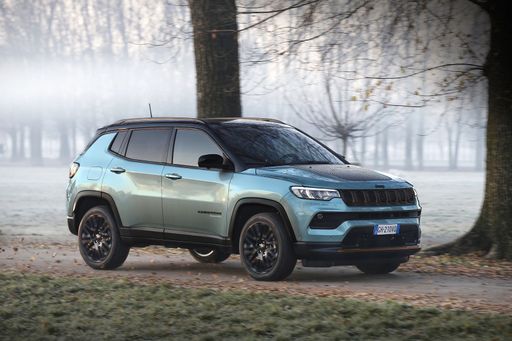 @ Jeep / Stellantis Media
@ Jeep / Stellantis Media
Jeep Compass
Costs and Consumption
View detailed analysis
Engine and Performance
View detailed analysis
Dimensions and Body
View detailed analysis
Fiat 500
The Fiat 500 is a cheeky, retro‑styled city car that turns heads with its iconic looks and playful personality. Perfect for weaving through tight streets and easing into tiny parking spots, it’s aimed at buyers who want style and character more than grand touring prowess.
details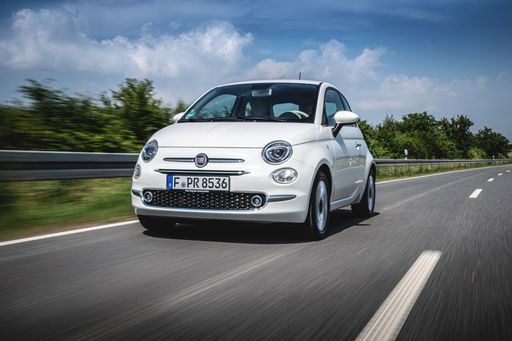 @ Fiat / Stellantis Media
@ Fiat / Stellantis Media
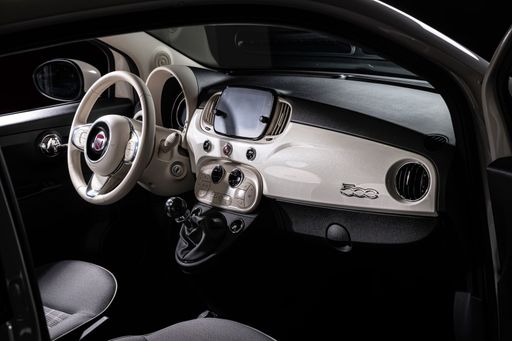 @ Fiat / Stellantis Media
@ Fiat / Stellantis Media
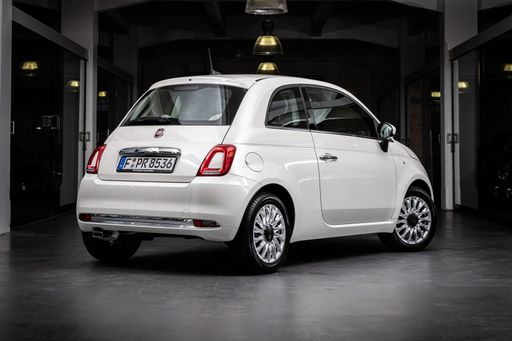 @ Fiat / Stellantis Media
@ Fiat / Stellantis Media
Jeep Compass
The Jeep Compass packs classic Jeep styling with a surprisingly composed demeanor, equally at home turning heads in the city or tackling a weekend dirt track. Inside it's a pragmatic, user-friendly compact SUV that prioritizes comfort and versatility — a smart pick if you want a dose of adventure without giving up everyday sense.
details @ Jeep / Stellantis Media
@ Jeep / Stellantis Media
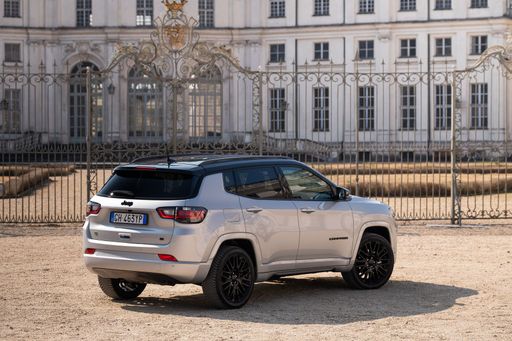 @ Jeep / Stellantis Media
@ Jeep / Stellantis Media
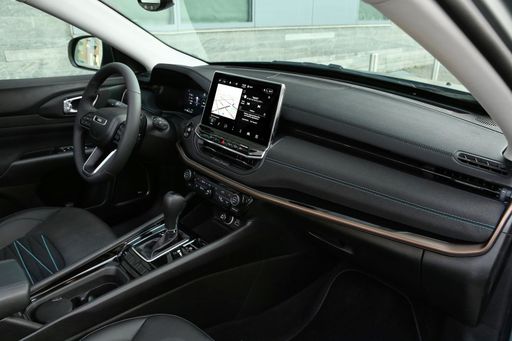 @ Jeep / Stellantis Media
@ Jeep / Stellantis Media
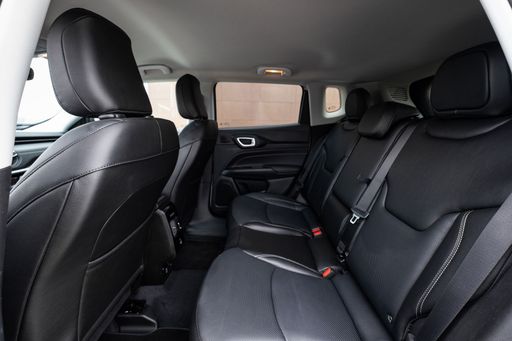 @ Jeep / Stellantis Media
@ Jeep / Stellantis Media
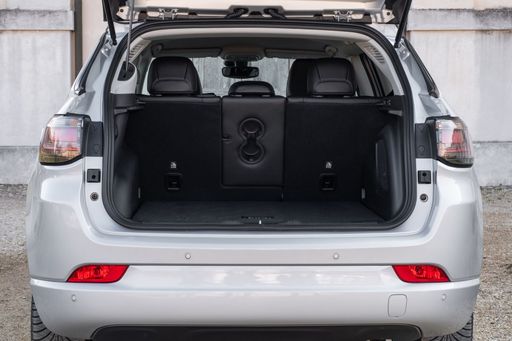 @ Jeep / Stellantis Media
@ Jeep / Stellantis Media
 @ Fiat / Stellantis Media
@ Fiat / Stellantis Media
|
 @ Jeep / Stellantis Media
@ Jeep / Stellantis Media
|
|
|
|
Costs and Consumption |
|
|---|---|
|
Price
18800 - 30800 £
|
Price
34200 - 43200 £
|
|
Consumption L/100km
5.30 L
|
Consumption L/100km
5.8 - 5.9 L
|
|
Consumption kWh/100km
13 - 14.7 kWh
|
Consumption kWh/100km
17.50 kWh
|
|
Electric Range
190 - 331 km
|
Electric Range
500 km
|
|
Battery Capacity
21.3 - 37.3 kWh
|
Battery Capacity
74 kWh
|
|
co2
0 - 120 g/km
|
co2
0 - 133 g/km
|
|
Fuel tank capacity
-
|
Fuel tank capacity
55 L
|
Dimensions and Body |
|
|---|---|
|
Body Type
Hatchback
|
Body Type
SUV
|
|
Seats
4
|
Seats
5
|
|
Doors
3 - 4
|
Doors
5
|
|
Curb weight
1141 - 1475 kg
|
Curb weight
1667 - 2198 kg
|
|
Trunk capacity
183 - 185 L
|
Trunk capacity
550 L
|
|
Length
3631 - 3632 mm
|
Length
4552 mm
|
|
Width
1683 - 1684 mm
|
Width
1928 mm
|
|
Height
1527 - 1532 mm
|
Height
1675 mm
|
|
Max trunk capacity
440 - 550 L
|
Max trunk capacity
1561 L
|
|
Payload
250 - 325 kg
|
Payload
-
|
Engine and Performance |
|
|---|---|
|
Engine Type
Electric, Petrol MHEV
|
Engine Type
Petrol MHEV, Electric
|
|
Transmission
Automatic, Manuel
|
Transmission
Automatic
|
|
Transmission Detail
Reduction Gearbox, Manual Gearbox
|
Transmission Detail
Dual-Clutch Automatic, Reduction Gearbox
|
|
Drive Type
Front-Wheel Drive
|
Drive Type
Front-Wheel Drive
|
|
Power HP
65 - 118 HP
|
Power HP
145 - 213 HP
|
|
Acceleration 0-100km/h
9 - 16.2 s
|
Acceleration 0-100km/h
8.5 - 10.3 s
|
|
Max Speed
135 - 155 km/h
|
Max Speed
180 - 188 km/h
|
|
Torque
220 Nm
|
Torque
230 - 345 Nm
|
|
Number of Cylinders
3
|
Number of Cylinders
3 - 4
|
|
Power kW
48 - 87 kW
|
Power kW
107 - 157 kW
|
|
Engine capacity
999 cm3
|
Engine capacity
1199 cm3
|
General |
|
|---|---|
|
Model Year
2023 - 2025
|
Model Year
2025
|
|
CO2 Efficiency Class
A, D
|
CO2 Efficiency Class
D, A
|
|
Brand
Fiat
|
Brand
Jeep
|
What drivetrain options does the Fiat 500 have?
The Fiat 500 is offered with Front-Wheel Drive.
The prices and data displayed are estimates based on German list prices and may vary by country. This information is not legally binding.
